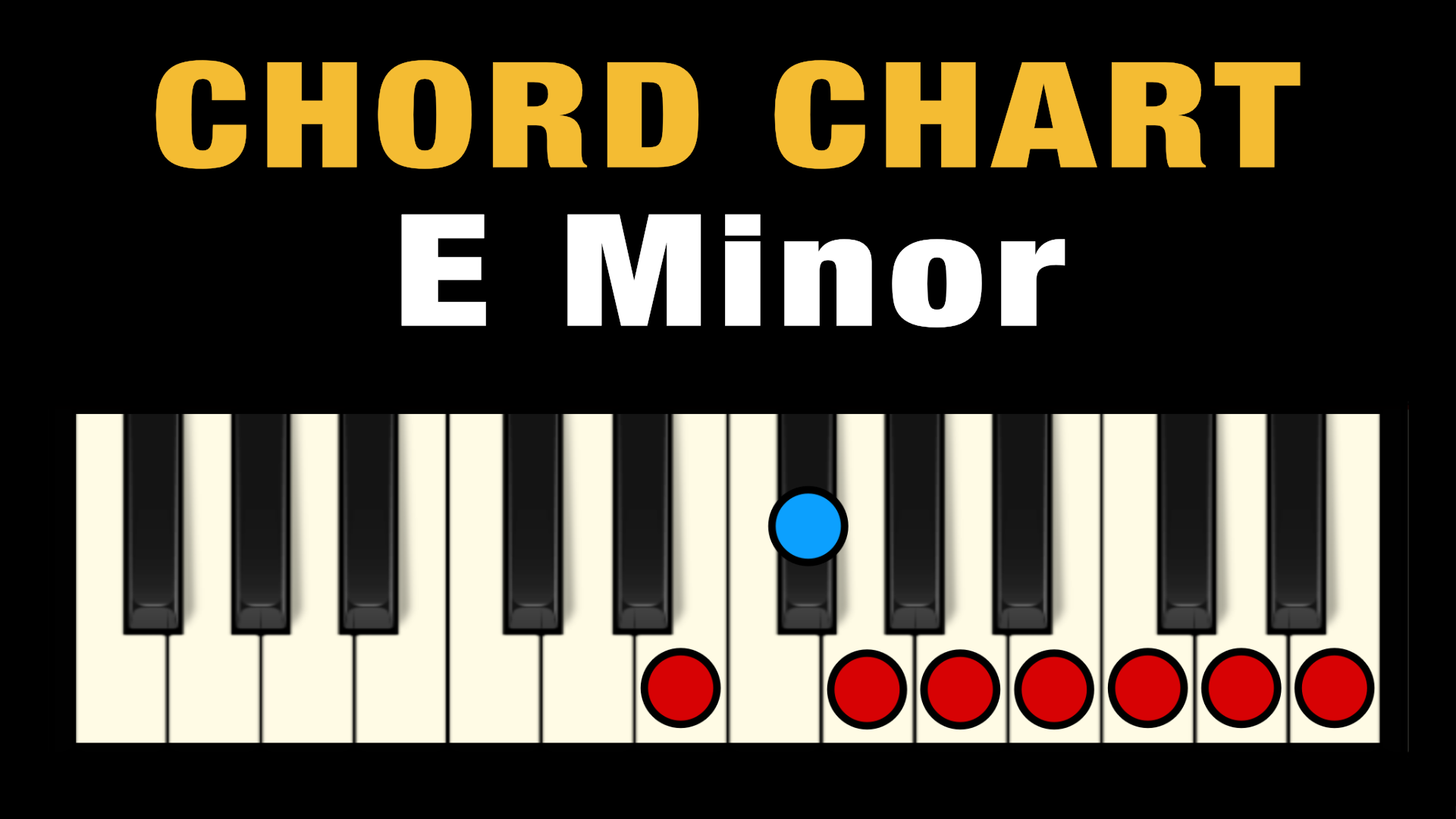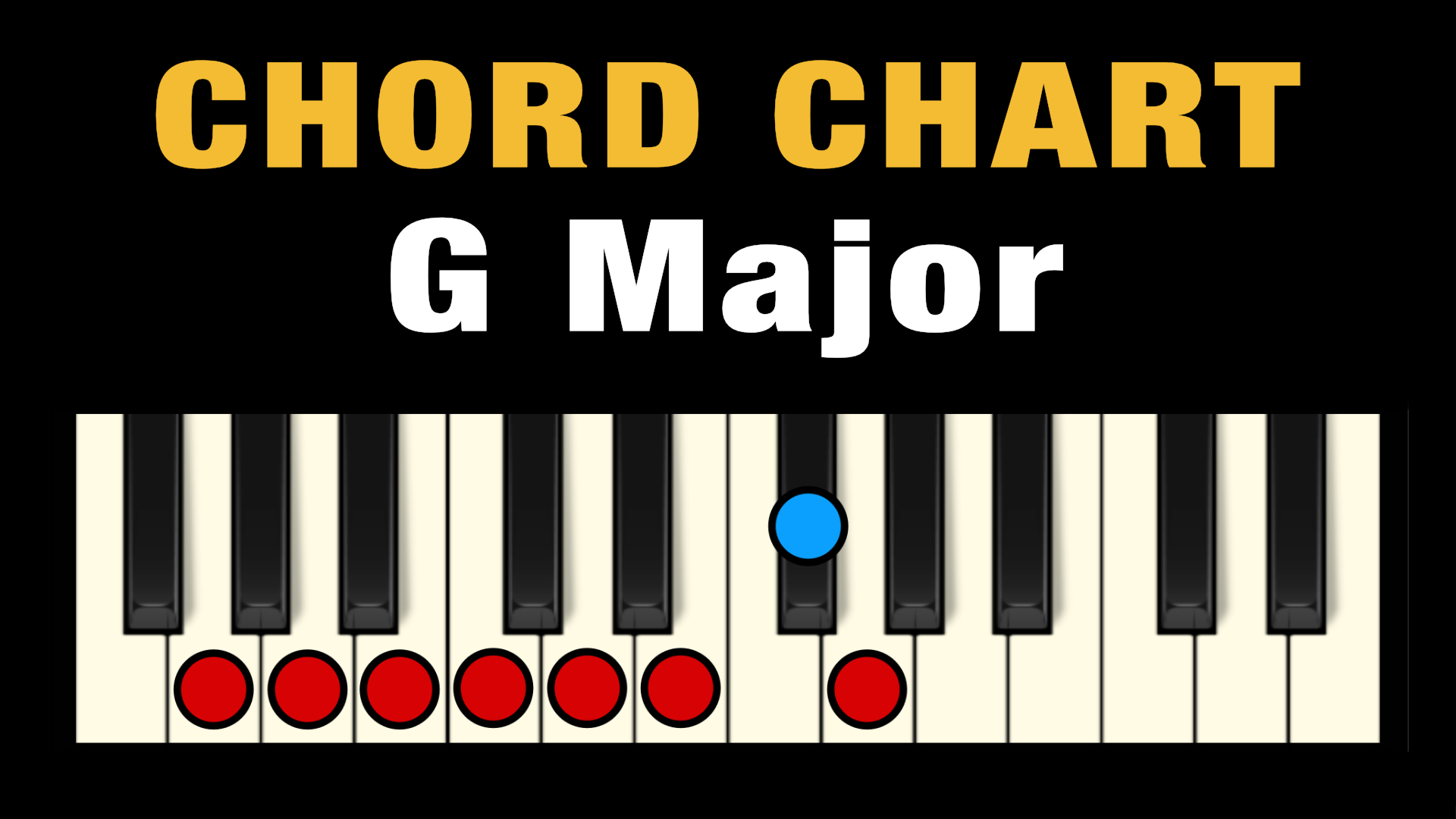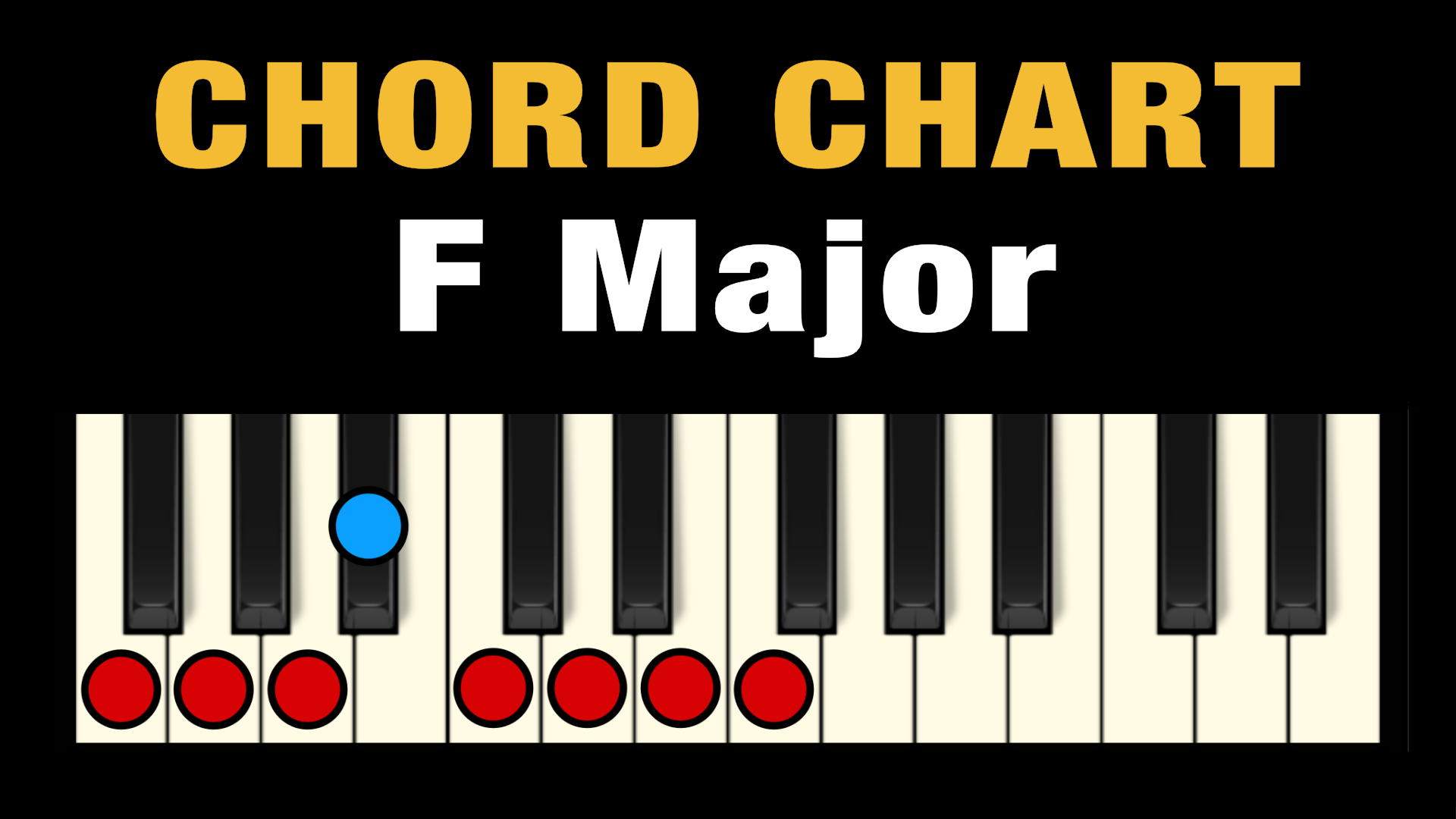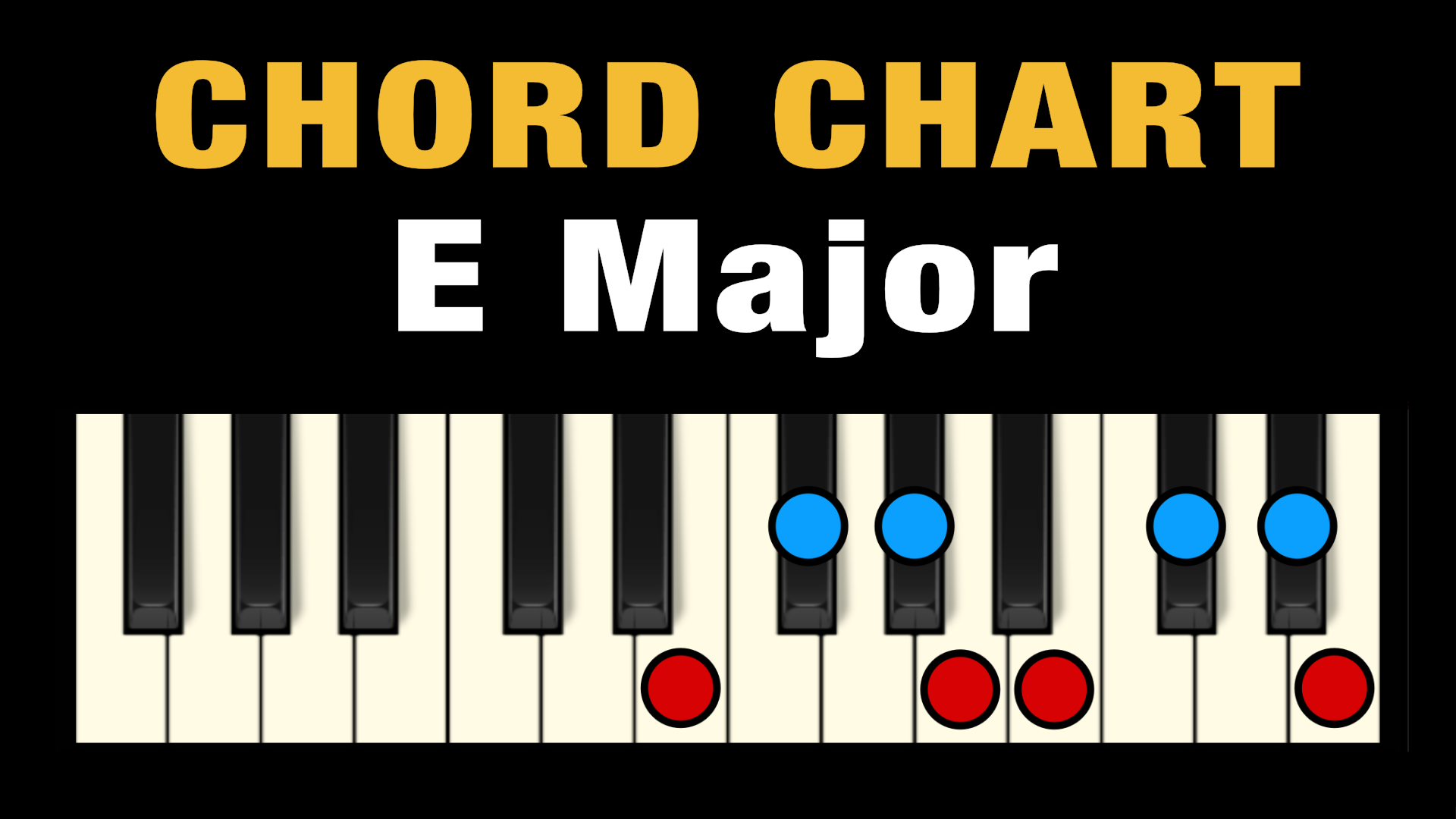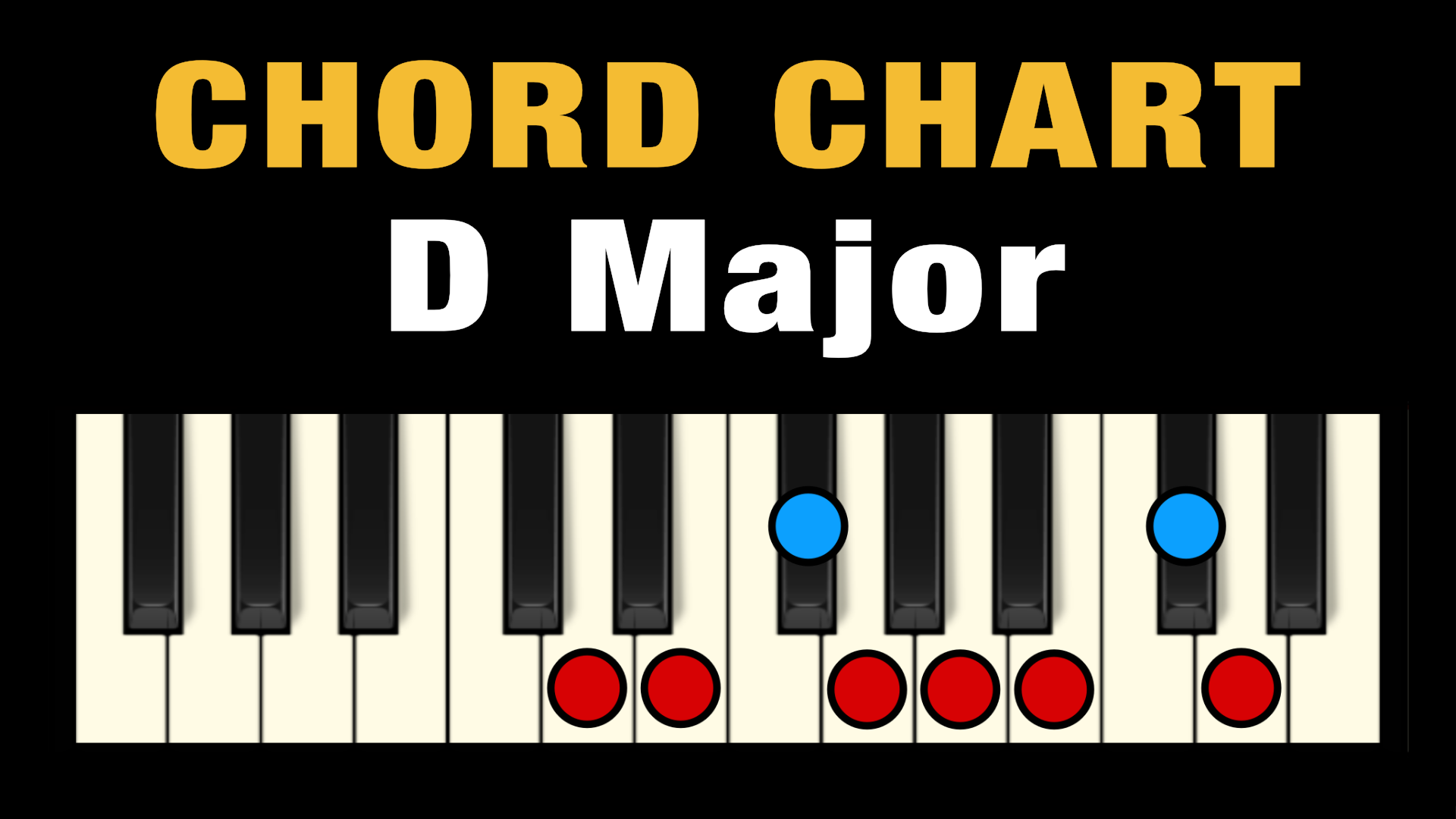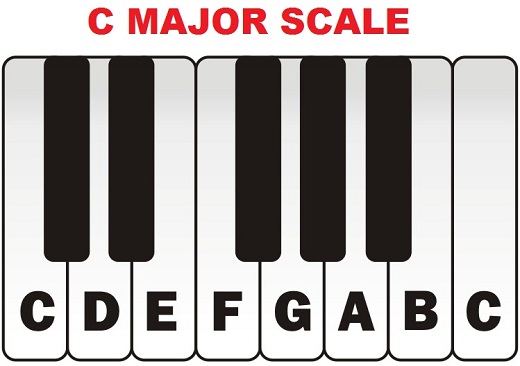E Minor is one of the most popular piano chords and notes used in many songs and compositions. It is a relatively easy chord to master, as it contains three notes that repeat in a simple pattern. E Minor is often used as a starting point for many songs, as its simple structure allows for the creation of a wide variety of melodies. It is also a great chord for improvisation, as its notes can easily be modified to create new and exciting sounds. Knowing how to play E Minor will open up a world of possibilities for your piano playing.
Exploring the Unique and Emotive Sounds of E Minor Piano Chords
E Minor is a captivating key that has been used in many styles of music, from classical to jazz to modern rock and pop. Its unique emotive sound has captivated musicians and listeners alike for centuries.
The characteristics of E Minor chords are quite distinct, and they can add an extra level of depth and emotion to any piece of music. When playing in the key of E Minor, the chords are all built on the root note of E, and they feature a minor third, minor sixth, and major seventh. In other words, the chord structure of E Minor is as follows: E – G – B♭ – D.
The sound of E Minor chords is often described as melancholic and somber, and it’s often used in music that has a sad or reflective mood. The minor third and minor sixth intervals give the chord a darker, more subdued tonality, while the major seventh adds a sense of tension and unresolvedness. This combination of tones can create a unique atmosphere of tension and emotion.
When it comes to playing E Minor chords on the piano, there are many different voicings available. Some of the most popular voicings include two-note chords, four-note chords, and even sixth chords and ninth chords. Each voicing has its own unique sound, and can be used to create beautiful, emotive melodies.
No matter what style of music you are playing, E Minor can be a great key to explore. With its unique and emotive sound, it can be used to create some truly captivating music.
Building a Solid Foundation of E Minor Piano Chords & Notes
Learning how to play piano chords and notes in E minor is an essential part of building a strong foundation for music theory and composition. E minor is a popular key in many different genres of music, from rock to classical. It is also the relative minor of G major, so understanding its chords and notes is a great way to start learning how to play piano in different keys.
When playing chords in E minor, you will use the notes E, G, and B. These three notes form the basis of the E minor triad, which is the most common chord in this key. This triad is made up of the root note (E), the minor third (G), and the perfect fifth (B). You can play this chord in various inversions, such as the open E minor chord, the 1st inversion E minor chord, or the 2nd inversion E minor chord.
In addition to the E minor triad, you can also use the notes E, A, B, and D to form the E minor pentatonic scale. This scale is made up of the root note (E), the minor third (G), the perfect fifth (B), the minor seventh (D), and the major sixth (A). This scale is used in many popular songs, as it gives a very pleasant sound that works well with many genres.
Furthermore, you can also play the E minor blues scale, which is made up of the root note (E), the minor third (G), the perfect fifth (B), the minor sixth (A), the minor seventh (D), and the augmented fourth (Ab). This scale is used to create a bluesy feel in many popular songs, giving them an emotional and soulful sound.
Once you have a good understanding of the E minor triad, pentatonic scale, and blues scale, you can start combining them to create interesting chord progressions, or use them as the foundation for improvising and composing music. This is a great way to get creative with your piano playing and explore different sounds and styles.
Overall, learning how to play piano chords and notes in E minor is a great way to build a strong foundation for music theory and composition. With practice, you can become comfortable with the notes and scales, and start creating your own music.
Creative Ways to Use E Minor Piano Chords & Notes in Jazz & Pop Music
E minor is one of the most popular and versatile piano chords and notes in jazz and pop music. With its melancholic sound, it can be used to create a range of emotions and musical styles. Here are some creative ways to use E minor chords and notes in jazz and pop music.
1. Use E minor as the tonic chord in a jazz or pop song. Using E minor as the tonic chord gives the song a melancholic feel, making it ideal for blues, jazz, and slow, emotional pop music.
2. Create a jazz blues progression with E minor as the tonic chord. This progression can be used as the basis of a jazz or blues jam session, or as the foundation for a song.
3. Incorporate E minor chords into a jazz improvisation. By playing E minor chords in an improvisation, you can create a more complex harmonic sound.
4. Create a jazz ballad using E minor chords. Ballads are slow, emotional songs that often feature minor chords. By using E minor chords, you can create a beautiful and heartfelt song.
5. Use E minor as a passing chord in a jazz or pop song. You can use E minor as a passing chord to transition between sections of a song. This can add tension and interest to the song.
6. Create a jazz or pop song with a major/minor contrast. By starting the song in major and transitioning to E minor, you can create a song that has a major/minor contrast. This can create a more dynamic and interesting sound.
By using these creative techniques, you can use E minor chords and notes to create beautiful and emotional jazz and pop music.
A Comprehensive Guide to Understanding E Minor Piano Chords & Notes
Learning the basics of E minor piano chords and notes is an essential part of developing your ability to play the piano. In this guide, we will discuss the fundamentals of E minor chords, provide examples of how to use them, and explain how to determine the notes associated with them. By the end of this guide, you should have a thorough understanding of E minor chords and notes.
First, let’s discuss what makes up an E minor chord. An E minor chord is composed of three notes: E, G, and B. All of these notes are part of the E minor scale, which is the same as the C major scale but with a different root note. When playing an E minor chord, start with the root note (E) and then play the other two notes (G and B). It is important to remember that the root note (E) is the most important note in the chord and should be played first.
Now, let’s look at how to use E minor chords in your playing. E minor chords can be used to create a variety of different musical styles, from jazz to classical to pop. To get started, try playing a simple E minor chord progression. Start with the root note (E), followed by the other two notes (G and B). Then, you can add other notes to create more complex chords and progressions.
Finally, let’s discuss how to determine the notes associated with an E minor chord. To do this, you need to know the key signature for the song you are playing. The key signature will tell you which notes to play in order to create the desired chord. Once you know the key signature, you can determine which notes are in the E minor chord by counting up from the root note (E). For example, if the key signature is G major, then the notes in an E minor chord would be E, G, B, D, and F.
By following the information provided in this guide, you should now have a better understanding of E minor piano chords and notes. We hope this guide has helped you gain a better understanding of how to use these chords in your music. Good luck!
The Benefits of Practicing E Minor Piano Chords & Notes
Practicing E Minor piano chords and notes can provide a number of benefits for piano players of all levels. Learning to play E minor chords can help to improve a pianist’s overall playing ability as well as give them a greater understanding of music theory.
One of the first benefits of practicing E minor chords is that it can help to improve a player’s coordination. By playing chords and notes in E minor, pianists can learn to move their hands in different directions, which can help them to become more efficient at the instrument. As they become more comfortable playing in this key, they can also learn to transition to other keys more easily.
In addition, playing E minor chords and notes can also help to expand a pianist’s musical knowledge. This key is frequently used in classical music and contemporary jazz, so learning how to play in it will give players an understanding of the structure and form of these styles of music. This knowledge can help a pianist become more well-rounded and give them the ability to play a wider variety of music.
Lastly, playing in E minor can also help to build confidence in a player’s performance. As players become more familiar with the chords and notes in this key, they can develop their own style and technique. This will help them to become more comfortable playing in front of others and help to boost their overall confidence in their music-making abilities.
Overall, practicing E minor piano chords and notes can provide a number of benefits for pianists of all levels. Learning to play in this key can help to improve coordination, expand musical knowledge, and build confidence in a player’s performance. For these reasons, taking the time to practice E minor chords and notes is an important part of any pianist’s musical journey.
Achieving Professionalism with E Minor Piano Chords & Notes
Professionalism is a key factor for any musician, whether you are a beginner or a professional. As a musician, it is important to master the basics of playing the piano, including the E minor piano chords and notes. This article will provide an introduction to the basics of E minor chords and notes, as well as tips on how to achieve professionalism in your playing.
The E minor chord is composed of the notes E, G, and B. To play this chord, start by placing your right hand on the notes E, G, and B. Your left hand should then be placed on the E and G notes. Once you have the notes in place, you can play the chord by pressing down on the notes with your right hand and strumming the strings with your left hand.
The E minor chords creates a more relaxed and sad feel. It is often used in ballads, classical music, and other types of music that require a melancholic feel. This chord is also popular in jazz music and is often used to create a more bluesy feel.
To achieve professionalism in your playing, it is important to practice the E minor piano chords and notes regularly. You should also learn to play the notes in different ways. For instance, you can play the notes as arpeggios, block chords, or broken chords. This will help you to create a more professional sound. Additionally, it is important to listen to professional recordings of the E minor chords and notes to get a better sense of how they should be played.
Finally, it is important to practice playing the E minor chords and notes slowly. This will help you to develop control over your playing and build the necessary muscle memory. Once you have the basics of the E minor piano chords and notes down, you can start to work on speed and accuracy.
In conclusion, professional music requires great skill and dedication to master. Learning the basics of E minor piano chords and notes is a great starting point in your journey. With regular practice, you can develop your skills and achieve the professionalism that you desire.
Conclusion
In conclusion, the E minor piano chords and notes are a great way to add a bit of depth and complexity to your songs. With their rich and varied sound, they can be used to create interesting and unique melodies and progressions that will help make your music stand out. With practice and dedication, anyone can master the use of E minor chords and notes to create beautiful compositions.
Since 2005, Singersroom has been the voice of R&B around the world. Connect with us via social media below.
